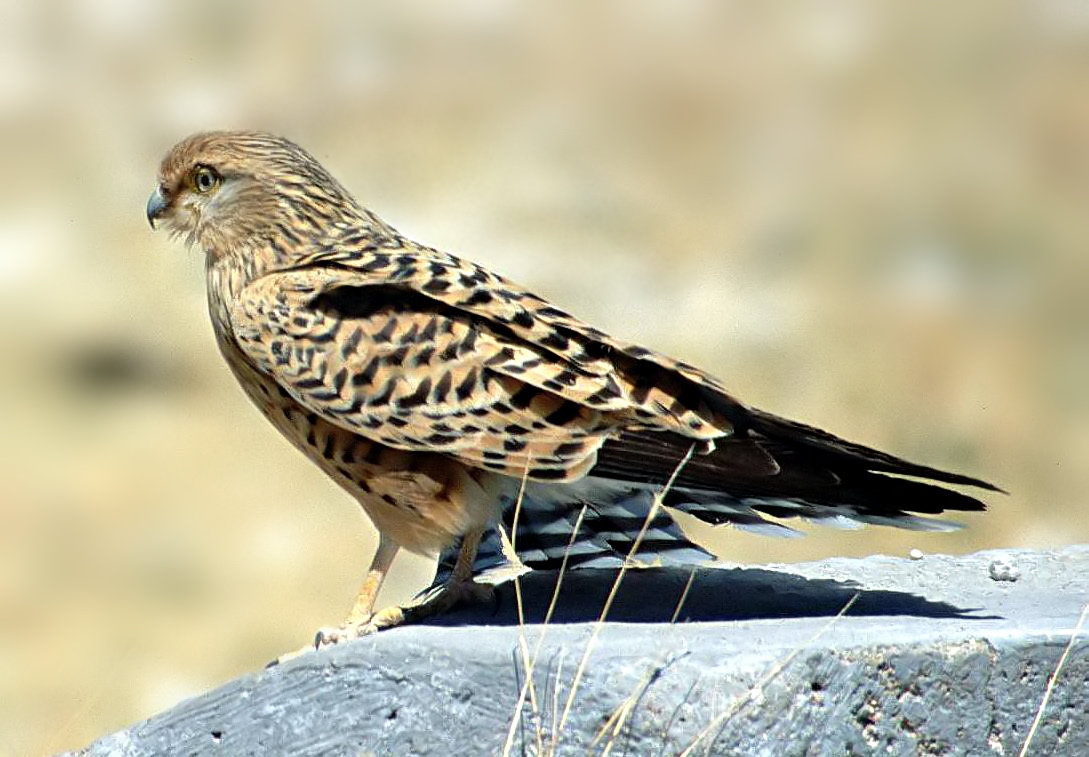- African kestrel
Taxobox
name = African kestrels

image_width = 204px
image_caption = Greater Kestrel, "Falco rupicoloides"
regnum =Animal ia
phylum =Chordata
classis =Aves
ordo =Falconiformes
familia =Falconidae
genus = "Falco" ("partim")
binomial = "Falco alopex"
binomial_authority = Heuglin, 1861
binomial2 = "Falco ardosiaceus"
binomial2_authority = Vieillot, 1823
binomial3 = "Falco dickinsoni"
binomial3_authority = Sclater, 1823
binomial4 = "Falco rupicoloides"
binomial4_authority = Smith, 1829There are four
kestrel species endemic to mainlandAfrica , and two also found elsewhere.The
Common Kestrel , "Falco tinnunculus", is found over much of mainland Africa away from desert and forest regions. Common Kestrels sometimes migrate but not over particularly long distances (e.g. centralEurope to North Africa), and severalsubspecies have emerged. The South African subspecies, known as the Rock Kestrel "F. t. rupicolus", is well distinct and might be a separate species (Groombridge "et al." 2002). Two sedentary subspecies live onCape Verde Islands , the Lesser Cape Verde Kestrel, "F. t. neglectus", on the north-western islands and the Greater Cape Verde Kestrel, "F. t. alexandri", elsewhere. There are also two sedentary subspecies on theCanary Islands , "F. t. canariensis" and "F. t. dacotiae".The
Fox Kestrel , "Falco alopex", is restricted to a narrow belt north of theequator ial forest and is classified endangered. It is the largest kestrel species and generally migrates a short distance north-south. Recent research hypothesizes the Fox Kestrel to be a basal lineage diverging from the common ancestor of all (non-gray) kestrels, with the probable exception of the American speciesFact|date=February 2007.The
Greater Kestrel (or White-eyed Kestrel), "Falco rupicoloides", is a sedentary bird of South and East Africa. It lives alongside the Rock Kestrel, and although larger there is little to distinguish the two behaviourally. It more similar in appearance to the Fox Kestrel however, differing in less reddish hue, a more spotted pattern, and most significantly in tail coloration, which is nearly pure fox red in the Fox, and dark gray with black bands in the Greater Kestrel. Its ancestors diverged from the Common-westernIndian Ocean kestrels ' lineage some time about 4-2 mya during thePiacenzian or earlyGelasian (Pliocene [The Gelasian might be moved to theEarly Pliocene . See Groombridge "et al." (2002) for discussion of this species' time of divergence.] ).Two kestrel species are gray. They also differ from other species in that they prefer to hunt from a perch, thus favouring open countryside with sporadic trees. Naturally they often use objects such as telephone poles. Both are sedentary. The
Gray Kestrel , "Falco ardosiaceus", is found in Central and Southern Africa, andDickinson's Kestrel , "Falco dickinsoni", which is paler and prefers swampy habitat, is found in Eastern and Southern Africa. They are grey species, appearing closer in color and pattern to theBanded Kestrel "F. zoniventris" ofMadagascar .The
Lesser Kestrel , "Falco naumanni", is a winter visitor to East Africa from nesting sites in Southern Europe.References
* Groombridge, Jim J.; Jones, Carl G.; Bayes, Michelle K.; van Zyl, Anthony J.; Carrillo, José; Nichols, Richard A. & Bruford, Michael W. (2002): A molecular phylogeny of African kestrels with reference to divergence across the Indian Ocean. "Molecular Phylogenetics and Evolution" 25(2): 267–277. DOI|10.1016/S1055-7903(02)00254-3 (HTML abstract)
Footnotes
External links
* [http://www.mangoverde.com/birdsound/picpages/pic32-33-4.html Greater Kestrel] photo. Retrieved 2007-MAR-1.
* [http://www.mangoverde.com/birdsound/picpages/pic32-36-1.html Gray Kestrel] photo. Retrieved 2007-MAR-1.
Wikimedia Foundation. 2010.
